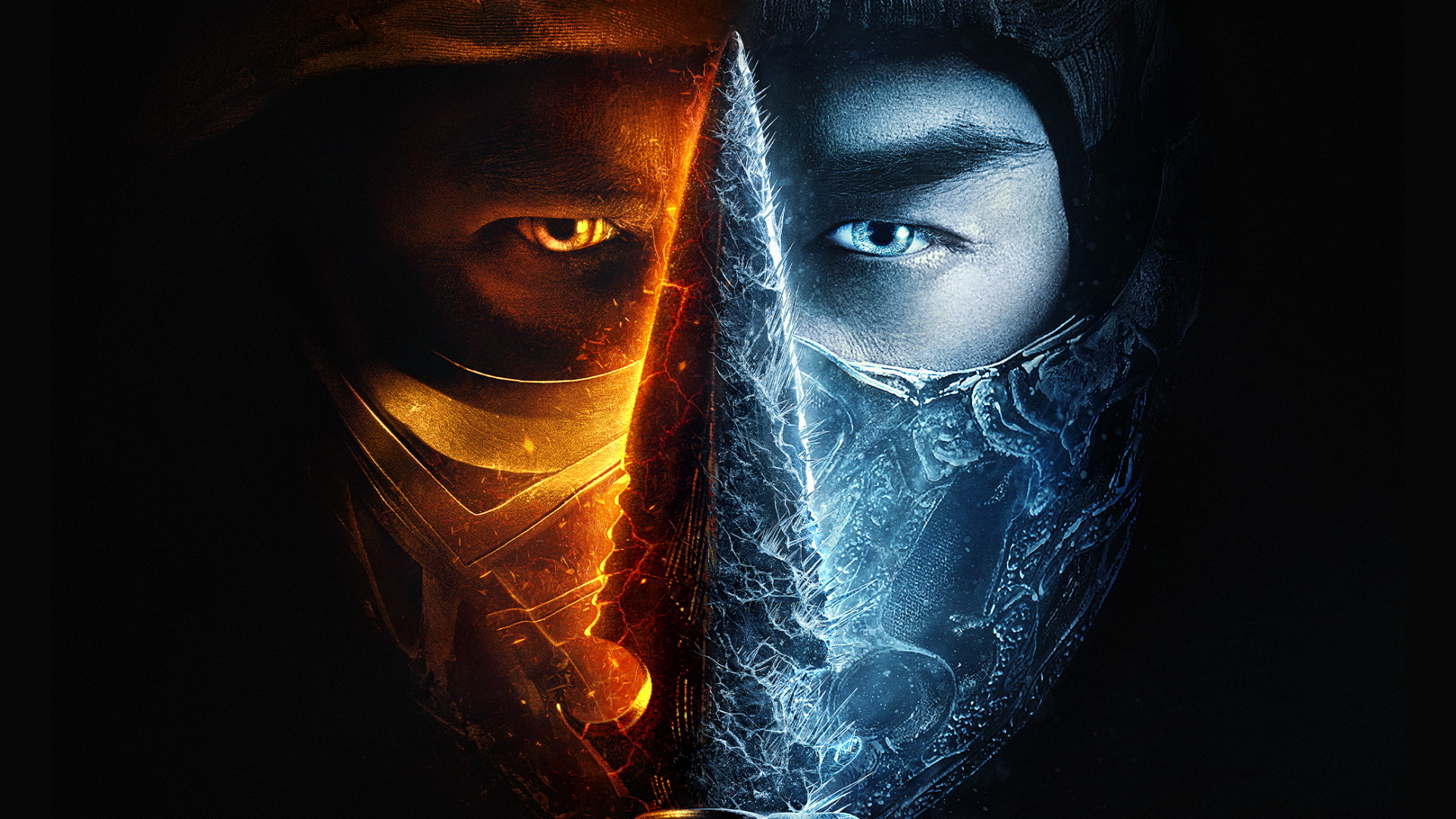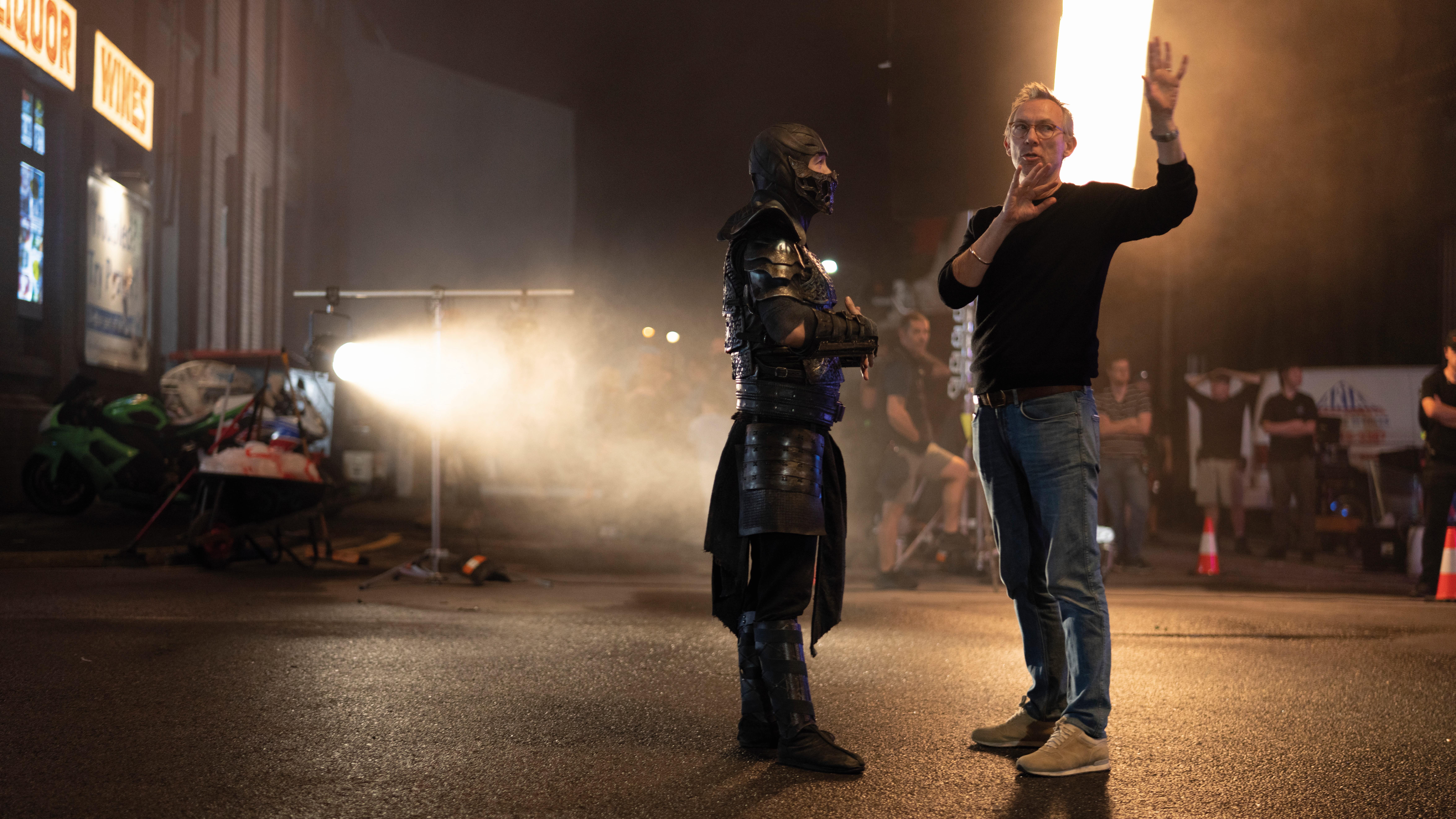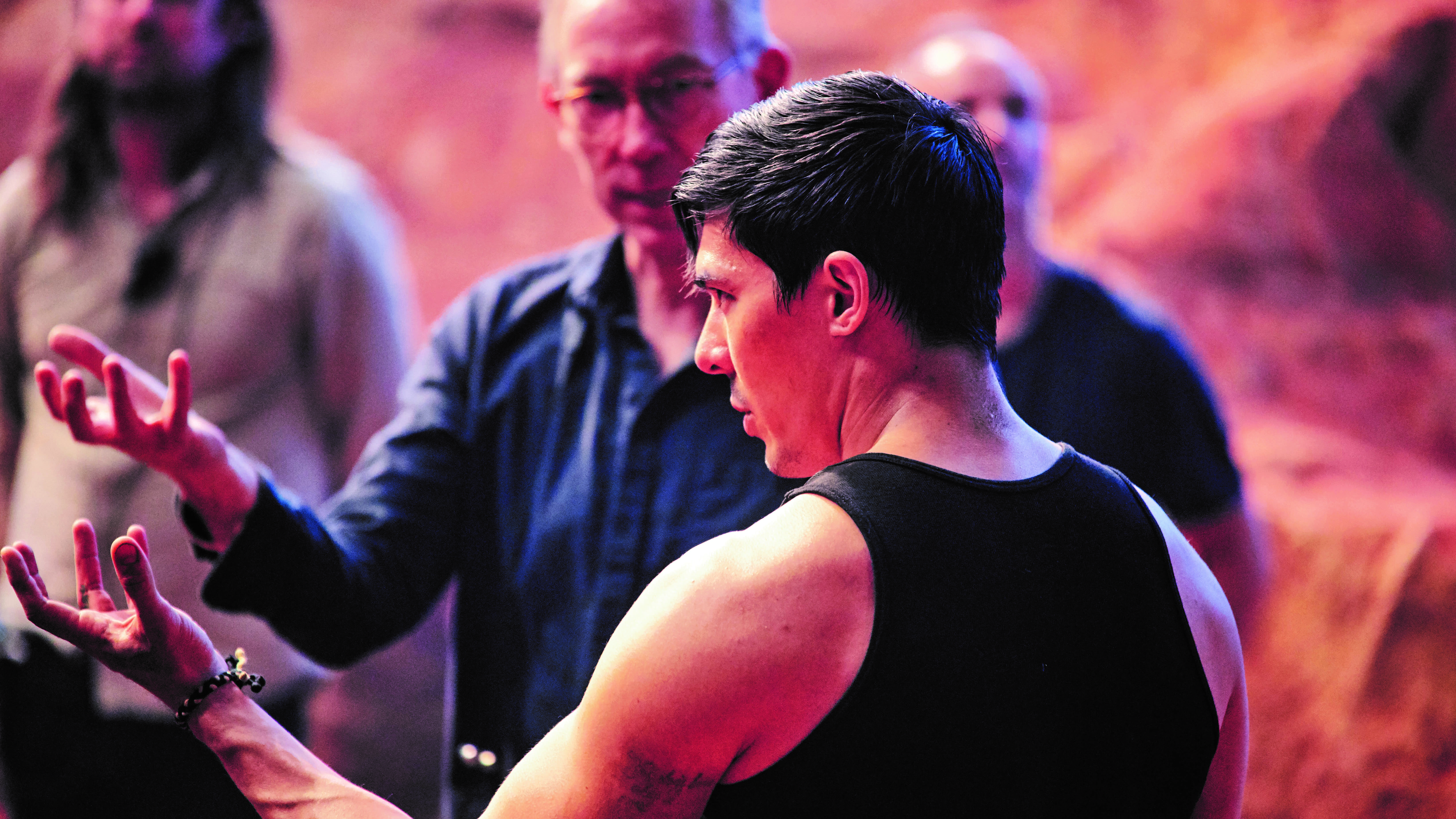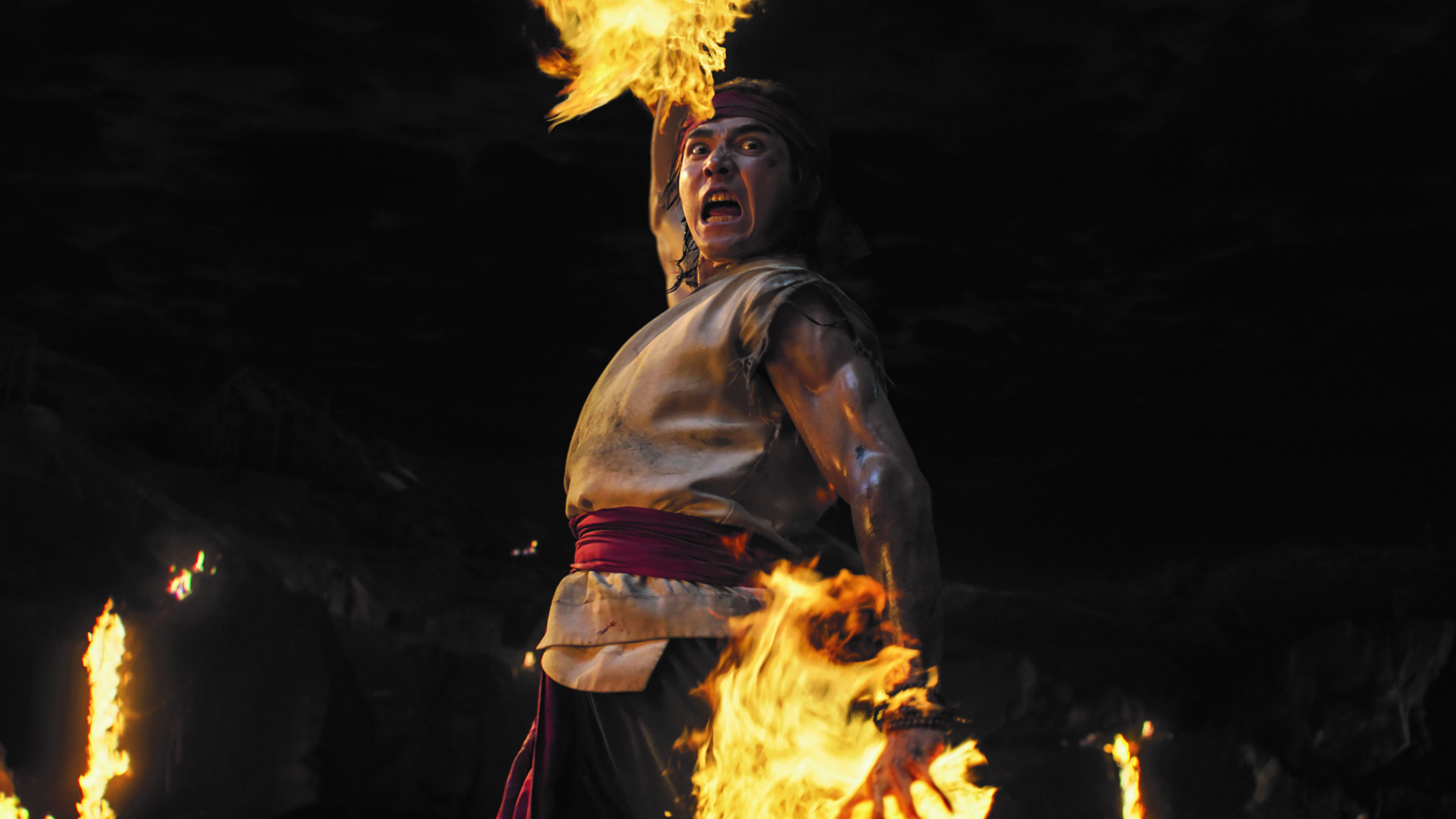The Mortal Kombat movie hopes to stay faithful to the games both in gore and spirit
Guts, grapples, and Goro—director Simon McQuoid talks about bringing Mortal Kombat to the silver screen.


This article first appeared in PC Gamer magazine issue 356 in April 2021. Every month we run exclusive features exploring the world of PC gaming—from behind-the-scenes previews, to incredible community stories, to fascinating interviews, and more.
The relationship between film and games has always felt... frayed. There’s a sense that Hollywood doesn’t quite understand this medium of ours—and there are so many failed game-to-film adaptations in the rearview that it’s hard to take a new one seriously.
The new Mortal Kombat film is... well, it’s not necessarily set to change that situation much. It’s not shaping up to be a movie with grand, serious ambitions, or Oscars twinkling in its eyes. But it does look like a film that actually understands its source material—not just in terms of story and characters, but in spirit.
“I said it to everyone who came on board ‘We are not changing the DNA [of Mortal Kombat],’” explains director Simon McQuoid. “And the DNA is built out of a few different, really key ingredients. There’s a brutality. There’s a sense of humour that runs through it. There’s a sort of epic world-building, a nobility, and respect for its serious canon. And there’s a thread of silly."
We see all of that in the first official trailer, a whirlwind of violence, dark humour, and cheesiness that does immediately feel like something out of the more recent games’ cinematic story modes. With Its rapid-fire character reveals and fan-pleasing moments—including Liu Kang performing his memorable (and ridiculous) fire dragon summoning move—it feels like a statement of intent as much as a taste of things to come. Particularly so in its deployment of blood and gore.
Blood Simple
Violence is perhaps the most iconic part of that Mortal Kombat DNA. More so even than ninjas, Outworld, and ‘Get over here!’, it’s the fatalities that the series is known for, both among fans and in the wider world. And yet the ’90s MK movies were PG-13s, with nary a spine-rip in sight.
In the trailer alone we see impalings, throats slit, a heart torn out, arms exploded, and a man impaled with a knife made out of his own frozen blood.
Not so here. In the trailer alone we see impalings, throats slit, a heart torn out, arms exploded, and a man impaled with a knife made out of his own frozen blood. Thanks to the film's R-rating, the violence looks more gorily faithful to the games than any fan could have dreamed. And despite the risks conventionally accepted to come with making an R-rated movie—“it’s sort of obvious, you’re limiting, not expanding, your audience”, as McQuoid puts it – that was an element the producers at New Line were committed to even before the director was brought on board.
“I think the guys at New Line realised very early on that, actually, there was great power in that, and it was worthwhile to do it that way,” says McQuoid. “Those guys were really interested in making something unique, something that really respected the material. And that’s what I wanted to do too.”
Keep up to date with the most important stories and the best deals, as picked by the PC Gamer team.

With that mission statement in mind, McQuoid began the production by “going back to Mortal Kombat University”, putting in the research to really understand the series. In fact, that effort never stopped throughout the project. “It’s so dense and rich—there’s so much to know. I don’t profess to know everything!” he says. “We really, really, really tried our best to get it as authentic and truthful and respectful of the Mortal Kombat canon as possible.
“So, you know, I read a lot, I played the games, I watched countless YouTube clips. And we were just constantly doing that, through the whole process of the film. We never stopped looking, searching, finding things out. It wasn’t like I did it to start with, then I was fine. You can’t stop. There’s too much to know.”
Time to Kill
Much of it pretty convoluted, it must be admitted. Over decades of games, that canon McQuoid is keen to be respectful to has tied itself into knots anyone would have trouble unpicking. The most recent three games, the most story-heavy of the series to date, used multiple kinds of time travel to soft reboot the setting and create brilliantly over-the-top fan-pleasing moments. In the process, they created a timeline so tangled that the only appropriate medium for explaining it would be thread and pins on a conspiracist’s corkboard.
A truly faithful recreation of Mortal Kombat’s story is probably too much to ask for, then—especially in a form that could be palatable to a movie-going audience, perhaps not familiar with the origins of the Cyber Lin Kuei, the corruption of the Jinsei, or who ‘Blaze’ is. McQuoid chose to focus instead on being faithful to the identities of that story’s key players – the film features Raiden, Kano, Sonya, Jax, Liu Kang, Kung Lao, Kano, Shang Tsung, Shao Kahn, Subzero, Scorpion, Goro, Mileena, and more, and each is immediately recognisable even from a few seconds of footage.

What was very important to me was taking these characters and elevating them to be sort of real but powerful, in a considered, respectful way
Simon McQuoid, director
“It’s really the characters that sort of bind it all together,” says McQuoid. “So in pre-production, we had this huge room, and in that room, each character had a giant wall of their own with every single iteration of how they’ve ever looked on the wall. “What was very important to me was taking these characters and elevating them to be sort of real but powerful, in a considered, respectful way. And certain things with the costumes don’t really work [in film]. You cannot let it end up feeling like [a] Halloween party, right? Everything has to have this sort of richness of detail and layering and so forth.
“So each character had their wall, and then we looked at it and said ‘OK, so what are they about? What’s the throughline here? What are the commonalities? Where have they taken license in the past?’ What we can’t do is come out with some crazy, weird interpretation, it has to be rooted in the truth that’s in all these aspects of where these characters have been.”

Hot and Cole
It’s perhaps a surprise, then, that the film actually introduces an entirely new character to serve as its protagonist. Cole Young, played by Lewis Tan, is a down-on-his-luck MMA fighter who just happens to have a birthmark in the shape of the Mortal Kombat dragon logo—something that seemingly makes him predestined to fight in the tournament, or else be hunted by Subzero and the Lin Kuei. Teaming up with the champions of Earthrealm, he’s the newbie for more familiar heroes to explain the nature of the strange and supernatural too.
He’s sure to be the film's most controversial element among series diehards—especially seeing as, in the otherwise exciting and fan-pleasing trailer, he comes off as a rather bland lead. But McQuoid sees even Cole as a perfectly natural extension of the spirit of the series.
“We really felt there was precedent,” says McQuoid. “Mortal Kombat brings new characters out all the time. So, you know, it’s sort of almost surprising to me that people are asking [why we added him]. It’s like well, have you played the game? There are always lots of new characters! It’s not like it’s just the classic set that’s stayed there the whole time. If it was only the original roster forever, if they hadn’t evolved and added 80 odd characters, I’m not sure we would have ever put a new character in. But it just seemed normal for the series.”

And, of course, Cole helps to serve as an audience surrogate for those less in the know about the series’ lore. “It’s trying to expand the Mortal Kombat fanbase really, and so this is a way to sort of educate people a bit as he gets brought into this story as well,” says McQuoid, who goes on to liken Cole to being the “player one” of the film. Though he’s keen to add he doesn’t mean that in a literal or meta sense. (“It’s not like, what were those films recently with Jack Black and The Rock?” “Oh, er, Jumanji?” I reply. “Yeah, we didn’t do that.”)
I’m left cautiously optimistic for the final product. It’s impossible not to have misgivings about a project like this—we’ve been burned too many times before—but I found it oddly refreshing to discover how thoughtful McQuoid is about one of gaming’s most endearingly ludicrous series. It gives me hope that this film will, at the very least, have its bloody heart in the right place.

Formerly the editor of PC Gamer magazine (and the dearly departed GamesMaster), Robin combines years of experience in games journalism with a lifelong love of PC gaming. First hypnotised by the light of the monitor as he muddled through Simon the Sorcerer on his uncle’s machine, he’s been a devotee ever since, devouring any RPG or strategy game to stumble into his path. Now he's channelling that devotion into filling this lovely website with features, news, reviews, and all of his hottest takes.

